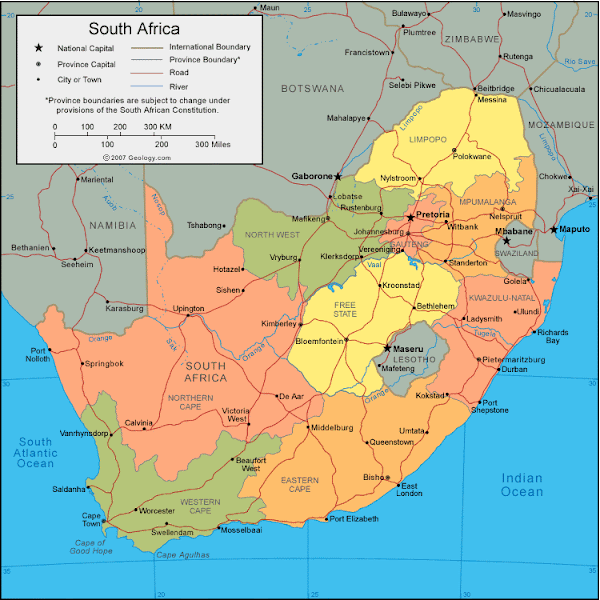Yesterday, we took the ferry boat out to Robben Island, the home of the notorious prison where Nelson Mandela and other political activists were kept for years. The island itself is forbidding: large, sandy, wild, scrubby, and windswept. There are some imported trees, but they look like they are trying to just hang on. The feeling of desolation is really powerful.
Before we went into the prison, we drove around the island, seeing the homes where the guards lived (and what was almost a charming tiny town and school for the guards and their families). We also got to see the white limestone quarry where Mandela and other prisoners were put to hard labor mining rocks. In fact, in photos of Mandela now, you can see that his eyes squint a bit from the permanent damage of working for years without sunglasses in the bright white limestone quarry. It hurt our eyes to look at the quarry in the sun for just a few minutes, I can say.
The quarry was also an important historical marker not just because it was the site of hard labor for so many important activists, but also because it was where the political prisoners taught each other (and the criminal prisoners) in a kind of informal but very powerful open university. Even some of the guards would come and listen to the teachings, and, in fact, it was such a place of powerful ideas that the Apartheid authorities had to regularly transfer guards out of Robben Island so they wouldn't become to politicized.
Inside the prison, the cell blocks were long and thin, made of blue stone with strong iron bars over the windows. All the windows currently have glass in them, but when the buildings were operated as a prison, often the glass would be broken and the cold wet ocean air went straight inside the unheated barracks. During the later Apartheid times, when the prisons were terribly overcrowded, so many men were kept in each cell that they were ordered to sleep on their sides on the floor so that every inch of space could be packed with prisoners.
We walked along the path that Nelson Mandela walked every day as he left for work in the quarry. The prison yard had no grass, just sand and rocks, and there were a few hard-scrabble scruffy looking plants. It was not a pleasant view. The outside of Mandela's cell window looked down into a closed cement yard where prisoners were given large rocks and a chisel and were forced to break the rocks into gravel. The gravel was not used for anything, so it was basically just a form of punishment, and the sound of so many inmates chiseling on rocks in a closed yard would have been almost deafening.
Mandela's cell, like the other cells, was impossibly small. In his autobiography he writes about how he couldn't lie down completely straight because he was too tall, but still, seeing the cell itself was very powerful in understanding what it must have been like. Inside the cell was a thin mat, which the prisoners used to sleep on, and a small box-like table, with a bucket for a toilet in the corner. There was almost no other space in the cell, and no chair for sitting. It was entirely a barren place, except of course that it was a place that Mr. Mandela used for some of his great thinking and teaching. It was a very powerful experience.
Our guide around the prison was a man named Derrick, a former political prisoner himself. He talked with us about his personal experiences there, and about some of the ideas that influenced his poltical thinking. He was younger than Mandela, and had been influenced by Steve Biko's Black Consciousness Movement more than the earlier ideas of Mandela and other 1960's ANC leaders. After Biko's murder at the hands of the police, he was part of the Black baby boom generation that swore to make the country ungovernable. Derrick told us how he joined an underground group that bombed a government building at night, and when he was caught, he was proud to plead guilty. And he said he has no regrets. It was quite an interesting discussion to say the least, and it was certainly an important perspective.
On our way back to the mainland, the ferry hit some really choppy water, and a few faces turned a bit green. Others (who shall be nameless but who seem to thrive on danger) used the moment to climb up several flights of stairs to get to the upper deck of the boat, passing people falling and flailing, and getting to sit up high in the pitching boat while rain and sun whipped down.
Many people walked around in the waterfront area after we got back to shore, with shopping, exploring, eating, listening to street musicians, and generally watching the sun slowly set over Table Mountain. It was delightful.
If only I had more time right now, I'd post about what we did today. But I'll have to do that later, as a group of us are about to head out to the Pan African Market in search of a traditional healer and interesting cultural artifacts. More later...
Monday, May 19, 2008
Subscribe to:
Post Comments (Atom)




No comments:
Post a Comment